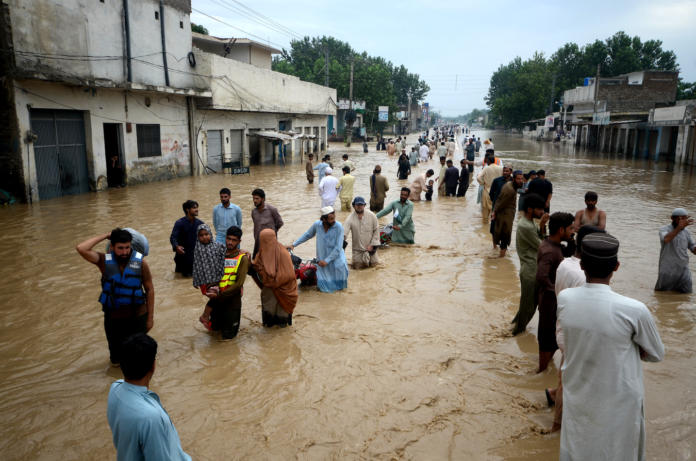Torrential storms have claimed 178 lives in Pakistan during this year’s monsoon season, according to official data released on Tuesday. In the neighboring South Asian nations of India and Nepal, the death toll has surpassed 400.
Spanning from June to September, monsoon rains provide much-needed relief from the scorching summer heat and are essential for replenishing water supplies. These rains are also crucial for agriculture, supporting the livelihoods of millions of farmers and ensuring food security for nearly two billion people across South Asia.
While weather-related disasters are a common occurrence during the monsoon, experts warn that climate change is amplifying both their frequency and intensity.
In Pakistan, the National Disaster Management Authority (NDMA) reported that 92 children are among the 178 people who have died since the rains began in July, with home collapses being the leading cause of fatalities.
Mountain villages in Khyber Pakhtunkhwa have been alerted to the risk of glacial lake flooding this week as rising temperatures and humidity pose additional threats.
Although Pakistan contributes less than one percent to global greenhouse gas emissions, it remains one of the most climate-vulnerable countries. The catastrophic floods of 2022 submerged a third of the country, resulting in over 1,700 deaths, displacing 33 million people, and destroying thousands of homes.
Monsoon Devastation Across South Asia
The monsoon rains have also wreaked havoc in other South Asian countries, with official figures revealing at least 250 deaths in India and 171 in Nepal.
India, the third-largest emitter of greenhouse gases globally, has pledged to achieve a net-zero emissions economy by 2070, two decades later than most industrialized nations. However, for now, the country remains heavily dependent on coal for power generation.
After enduring the longest-ever recorded heatwave just a few months ago, India is now grappling with severe rainstorms that have triggered widespread flooding and landslides.
During May and June, the intense heatwave saw temperatures in New Delhi soar to a record-tying 49.2°C, matching the previous high set in 2022. As the heat subsided, the monsoon rains have taken over.
This week, India’s weather department issued warnings of “heavy rainfall” across much of the southern and northeastern regions.
In Himachal Pradesh’s Una district, Indian rescue teams were searching for two missing people on Tuesday after a surge of floodwaters drowned nine others. Witnesses described a car being swept away by the swollen, muddy river as if it were a mere toy.
“Several people tried to stop the car […] as the current was rising, but it sped past and was soon swept away by the strong current,” recounted Rajendra Kumar.
This month alone, scores of people have died across India, with 200 fatalities reported last month in Kerala when landslides ravaged villages and tea plantations.
In Nepal, 171 people have lost their lives since the monsoon rains began in mid-June, with 109 of these deaths caused by landslides.
Floods and lightning strikes have also contributed to the death toll, according to Nepal’s disaster authority.
Search operations are still underway in central Nepal’s Chitwan district, where two buses were swept over concrete crash barriers into a raging river on July 12, claiming around 50 lives.






















